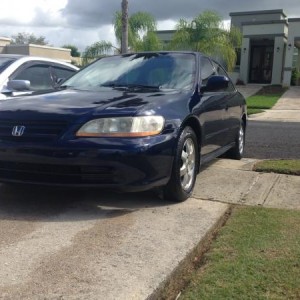LitoCG2Rider
Well-Known Member
thought this will come in handy when you guys/girls begin to check your tires thread life...
Can Honest Abe no longer be trusted for the tire test?

According to The Tire Rack, the traditional Penny Test should be replaced by the Quarter Test to be certain your tires are safe for wet-weather driving.
Blame it on inflation. For years the de facto standard for determining how much rubber remained on your tires was to use a penny. Depending on how much of Lincoln’s noggin was visible when the coin was placed in the tire’s treads, you knew if it was time for a new set of shoes for your ride. Now nationwide retailer The Tire Rack says the price of the test has gone up 2500 percent. The Tire Rack claims the so-called Penny Test should be replaced by the Quarter Test if you want to be certain your tires are safe for wet-weather driving.
Devaluing the Penny
Developed decades ago as a quick way to check your tires for tread wear, the Penny Test consists of placing the coin upside down in a tire’s tread grooves. If the top of Lincoln's hair is visible, it indicates that the tread has worn to less than 2/32 of an inch (1.6mm). In some states it’s illegal to drive with only that amount of tread wear remaining on a tire. Even if it’s not the law where you live, it can be downright dangerous to rely on so little rubber for traction in emergency situations.
After testing tires that pass the Penny Test on a water-slicked track and comparing their grip to tires with a tread depth of 4/32 of an inch — or the amount of tread that’s left when you place a quarter in a tire’s grooves and can still see Washington’s scalp — The Tire Rack says that small amount of extra rubber makes a big difference in stopping distances. At highway speeds with 2/32 of an inch of tread depth remaining, resistance to hydroplaning (when a tire “floats” over water on the road instead of gripping the pavement) is significantly reduced and stopping distances dramatically increase.
“Our recommendation is intended to get people to recognize that they’re going to be sacrificing wet stopping ability by letting their tires get to a 2/32 of an inch tread depth," says John Rastetter, director of tire information at The Tire Rack. “And we want them to consider that rather than driving on their tires longer.”
Baking Rubber
The Tire Rack came to its “two-bit” conclusion after conducting an independent test that compared the stopping distances of tires with 2/32 of an inch of remaining tread depth to tires with 4/32 of an inch of tread depth and to new tires. The tests were conducted at a 70-degree ambient temperature on a 600-foot long asphalt braking lane using a 2006 BMW 325i and a 2006 Ford F-150 SuperCab 4x2 pickup driving at 70 mph. Both vehicles were equipped with four-wheel disc brakes and anti-lock brake systems, and with tires that had been used as original equipment on equivalent models of the cars.
One set of test tires had full tread depth, while the other two sets were shaved to 4/32 and 2/32 of an inch of remaining tread and baked in an industrial oven at temperatures that replicate aging the rubber over several years of driving. All tire sets were broken in for approximately 100 highway miles. The asphalt test track was wetted by a watering system that maintained 0.05 to 0.06 an inch of water depth above the peaks of the asphalt's aggregate. To bring another coin measurement into mix, this means you could lay a dime on the road and the water would flow around but not over it. The testers accelerated to just above 70 mph on dry road and then drove across about 75 feet of wet pavement before slamming on the brakes and recording a panic-stopping distance.

Just 2/32 of an inch of tire tread can dramatically change stopping distance on wet roads.
Coming to a Halt
After repeated runs in the BMW with new tires, the average stopping distance was 195.2 feet in 3.7 seconds. On tires with 4/32 of an inch of remaining tread depth, the average stopping distance was 290.0 feet in 4.7 seconds, and the car was traveling at a little over 45 mph when it reached the distance it took the new tires to bring the BMW to a stop. Tires with the 2/32 of an inch of tread depth had an average stopping distance almost double from what it had been for the new tires, 378.8 feet, and it took 5.9 seconds to stop. Plus, the car was still traveling at around 55 mph when it reached the same distance it took the BMW to stop with the new tires.
For the same test in the Ford pickup, the average stopping distance when it was shod with new rubber was 255.9 feet in 4.8 seconds. Stopping the truck with tires worn down to 4/32 of an inch of tread depth took 377.8 feet in 6.0 seconds, and the truck was still traveling about 47 mph when it reached the distance it had taken the new tires to bring the pickup to a halt. On tires with 2/32 of an inch of remaining tread depth, it took the truck 499.5 feet to stop in 7.5 seconds — meaning that the road would have to be clear for almost 1/10 of a mile ahead to allow a complete panic stop without slamming into something. The testers also observed that the truck with the 2/32-inch tread-depth tires slowed only to about 58 mph when it reached the same distance at which the new tires brought the vehicle to a halt. (Click here to see a video of the test.)
40 Years of Penny Testing
In advocating the Quarter Test, Rastetter said The Tire Rack isn’t necessarily recommending that car owners replace their tires when they reach 4/32 of an inch of tread depth, but to start considering it, especially for wet-weather driving. “By the time their tires reach the 4/32 of an inch mark, drivers should be doing their research for their next set of tires and make that purchase soon thereafter,” he says.
While The Tire Rack has obvious financial incentives in recommending that car owners replace their tires sooner, the retailer acknowledges that there are trade-offs in doing so, such as an increase in driving cost per mile for consumers and more tires being discarded annually. But the company feels that that the monetary and incalculable costs from accidents due to driving on worn-out tires far exceed such concerns.
The company also wants to change long-standing rules on when a tire is out of warranty. “Some tire tread-wear warranties require that all four tires be worn down to approximately 2/32 of an inch of remaining tread depth before they can be submitted to the manufacturer for consideration,” Rastetter adds. “And if you live in an area with frequent snow and rain, we feel the consumer should be in a position to change the tires sooner to maintain better control of their vehicles rather than pushing it for the last couple of thousand miles to claim their tread-wear warranty.”
The Tire Rack also points out that the Penny Test standard dates back 40 years. As specified in the 1968 Federal Motor Vehicle Safety Standard 109, wear indicators with 2/32-inch raised bars were required to be molded across tire treads, under the premise that tires lose traction capabilities at about 2/32 of an inch of remaining tread depth. Of course, tires and vehicles have changed quite a bit in 40 years. According to The Tire Rack, a 1967 Chevrolet Impala was originally equipped with 14-inch tires with 4.5-inch wide treads, while a 2007 Impala uses 16-inch tires with 7.1-inch treads — over one and a half times wider.
Message board: Do you think better wet-weather performance is worth more frequent tire purchases?
Presidential Preference
“Certainly new tires provide the greatest protection when it comes to the tire’s ability to avoid hydroplaning and brake in a short distance in wet conditions,” Rastetter says. “Our tests were intended to show that when tires wear down to 2/32 of an inch, it virtually doubles the stopping distance compared to a new tire. And by considering replacing tires at the 4/32 of an inch, it gives car owners more leeway in researching their tire purchase.”
In other words, you can no longer rely on Honest Abe to tell you if your tires are okay, but Washington and a quarter will never tell a lie about when it’s time for new rubber.

Can Honest Abe no longer be trusted for the tire test?

According to The Tire Rack, the traditional Penny Test should be replaced by the Quarter Test to be certain your tires are safe for wet-weather driving.
Blame it on inflation. For years the de facto standard for determining how much rubber remained on your tires was to use a penny. Depending on how much of Lincoln’s noggin was visible when the coin was placed in the tire’s treads, you knew if it was time for a new set of shoes for your ride. Now nationwide retailer The Tire Rack says the price of the test has gone up 2500 percent. The Tire Rack claims the so-called Penny Test should be replaced by the Quarter Test if you want to be certain your tires are safe for wet-weather driving.
Devaluing the Penny
Developed decades ago as a quick way to check your tires for tread wear, the Penny Test consists of placing the coin upside down in a tire’s tread grooves. If the top of Lincoln's hair is visible, it indicates that the tread has worn to less than 2/32 of an inch (1.6mm). In some states it’s illegal to drive with only that amount of tread wear remaining on a tire. Even if it’s not the law where you live, it can be downright dangerous to rely on so little rubber for traction in emergency situations.
After testing tires that pass the Penny Test on a water-slicked track and comparing their grip to tires with a tread depth of 4/32 of an inch — or the amount of tread that’s left when you place a quarter in a tire’s grooves and can still see Washington’s scalp — The Tire Rack says that small amount of extra rubber makes a big difference in stopping distances. At highway speeds with 2/32 of an inch of tread depth remaining, resistance to hydroplaning (when a tire “floats” over water on the road instead of gripping the pavement) is significantly reduced and stopping distances dramatically increase.
“Our recommendation is intended to get people to recognize that they’re going to be sacrificing wet stopping ability by letting their tires get to a 2/32 of an inch tread depth," says John Rastetter, director of tire information at The Tire Rack. “And we want them to consider that rather than driving on their tires longer.”
Baking Rubber
The Tire Rack came to its “two-bit” conclusion after conducting an independent test that compared the stopping distances of tires with 2/32 of an inch of remaining tread depth to tires with 4/32 of an inch of tread depth and to new tires. The tests were conducted at a 70-degree ambient temperature on a 600-foot long asphalt braking lane using a 2006 BMW 325i and a 2006 Ford F-150 SuperCab 4x2 pickup driving at 70 mph. Both vehicles were equipped with four-wheel disc brakes and anti-lock brake systems, and with tires that had been used as original equipment on equivalent models of the cars.
One set of test tires had full tread depth, while the other two sets were shaved to 4/32 and 2/32 of an inch of remaining tread and baked in an industrial oven at temperatures that replicate aging the rubber over several years of driving. All tire sets were broken in for approximately 100 highway miles. The asphalt test track was wetted by a watering system that maintained 0.05 to 0.06 an inch of water depth above the peaks of the asphalt's aggregate. To bring another coin measurement into mix, this means you could lay a dime on the road and the water would flow around but not over it. The testers accelerated to just above 70 mph on dry road and then drove across about 75 feet of wet pavement before slamming on the brakes and recording a panic-stopping distance.

Just 2/32 of an inch of tire tread can dramatically change stopping distance on wet roads.
Coming to a Halt
After repeated runs in the BMW with new tires, the average stopping distance was 195.2 feet in 3.7 seconds. On tires with 4/32 of an inch of remaining tread depth, the average stopping distance was 290.0 feet in 4.7 seconds, and the car was traveling at a little over 45 mph when it reached the distance it took the new tires to bring the BMW to a stop. Tires with the 2/32 of an inch of tread depth had an average stopping distance almost double from what it had been for the new tires, 378.8 feet, and it took 5.9 seconds to stop. Plus, the car was still traveling at around 55 mph when it reached the same distance it took the BMW to stop with the new tires.
For the same test in the Ford pickup, the average stopping distance when it was shod with new rubber was 255.9 feet in 4.8 seconds. Stopping the truck with tires worn down to 4/32 of an inch of tread depth took 377.8 feet in 6.0 seconds, and the truck was still traveling about 47 mph when it reached the distance it had taken the new tires to bring the pickup to a halt. On tires with 2/32 of an inch of remaining tread depth, it took the truck 499.5 feet to stop in 7.5 seconds — meaning that the road would have to be clear for almost 1/10 of a mile ahead to allow a complete panic stop without slamming into something. The testers also observed that the truck with the 2/32-inch tread-depth tires slowed only to about 58 mph when it reached the same distance at which the new tires brought the vehicle to a halt. (Click here to see a video of the test.)
40 Years of Penny Testing
In advocating the Quarter Test, Rastetter said The Tire Rack isn’t necessarily recommending that car owners replace their tires when they reach 4/32 of an inch of tread depth, but to start considering it, especially for wet-weather driving. “By the time their tires reach the 4/32 of an inch mark, drivers should be doing their research for their next set of tires and make that purchase soon thereafter,” he says.
While The Tire Rack has obvious financial incentives in recommending that car owners replace their tires sooner, the retailer acknowledges that there are trade-offs in doing so, such as an increase in driving cost per mile for consumers and more tires being discarded annually. But the company feels that that the monetary and incalculable costs from accidents due to driving on worn-out tires far exceed such concerns.
The company also wants to change long-standing rules on when a tire is out of warranty. “Some tire tread-wear warranties require that all four tires be worn down to approximately 2/32 of an inch of remaining tread depth before they can be submitted to the manufacturer for consideration,” Rastetter adds. “And if you live in an area with frequent snow and rain, we feel the consumer should be in a position to change the tires sooner to maintain better control of their vehicles rather than pushing it for the last couple of thousand miles to claim their tread-wear warranty.”
The Tire Rack also points out that the Penny Test standard dates back 40 years. As specified in the 1968 Federal Motor Vehicle Safety Standard 109, wear indicators with 2/32-inch raised bars were required to be molded across tire treads, under the premise that tires lose traction capabilities at about 2/32 of an inch of remaining tread depth. Of course, tires and vehicles have changed quite a bit in 40 years. According to The Tire Rack, a 1967 Chevrolet Impala was originally equipped with 14-inch tires with 4.5-inch wide treads, while a 2007 Impala uses 16-inch tires with 7.1-inch treads — over one and a half times wider.
Message board: Do you think better wet-weather performance is worth more frequent tire purchases?
Presidential Preference
“Certainly new tires provide the greatest protection when it comes to the tire’s ability to avoid hydroplaning and brake in a short distance in wet conditions,” Rastetter says. “Our tests were intended to show that when tires wear down to 2/32 of an inch, it virtually doubles the stopping distance compared to a new tire. And by considering replacing tires at the 4/32 of an inch, it gives car owners more leeway in researching their tire purchase.”
In other words, you can no longer rely on Honest Abe to tell you if your tires are okay, but Washington and a quarter will never tell a lie about when it’s time for new rubber.

Once the standard industry measure, a tread depth of 2/32 of an inch, represented by the penny test, may not be good enough for certain road conditions.
Last edited:





![IMAGE 135[1] (2)](/forums/data/xfmg/thumbnail/0/59-b08b5f5316722b505e6175aaad7787f9.jpg?1695467876)

